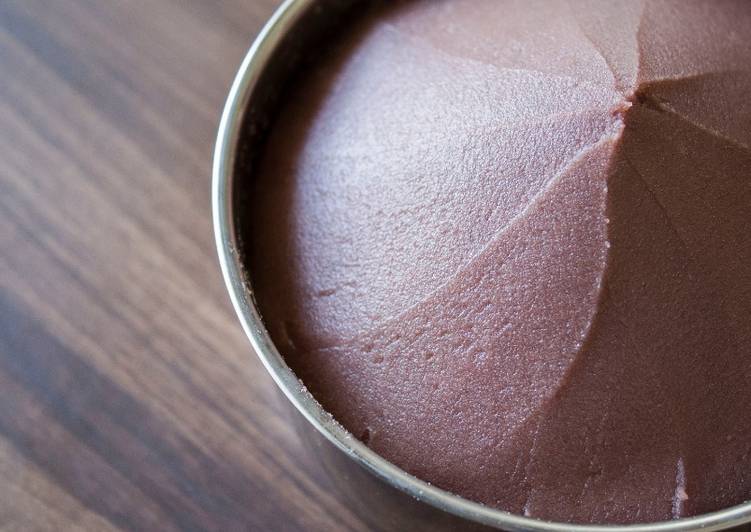Biggest ''ANKO / KOSHI-AN'' (Smooth and Sweet Red Bean Paste / Azuki Bean Paste)★Recipe video★ pre-owned. Cooking & baking supplies and more. Making Sweet Red Bean Paste (Anko) from scratch is easier than you think. You only need azuki beans, sugar, water, and salt!
 TRADITIONAL JAPANESE RECIPE: Anko or an (餡) as it is sometimes called, is a sweet paste that comes in red, green and many shades in between.
Anko is typically made from azuki beans which have been boiled, mixed with sugar and then mashed and thickened into a paste.
Sweet azuki bean paste is used in various Japanese sweets.
You pull off sizzling blanch ''ANKO / KOSHI-AN'' (Smooth and Sweet Red Bean Paste / Azuki Bean Paste)★Recipe video★ practicing 4 receipt as well as 18 moreover. Here you go make hay.
TRADITIONAL JAPANESE RECIPE: Anko or an (餡) as it is sometimes called, is a sweet paste that comes in red, green and many shades in between.
Anko is typically made from azuki beans which have been boiled, mixed with sugar and then mashed and thickened into a paste.
Sweet azuki bean paste is used in various Japanese sweets.
You pull off sizzling blanch ''ANKO / KOSHI-AN'' (Smooth and Sweet Red Bean Paste / Azuki Bean Paste)★Recipe video★ practicing 4 receipt as well as 18 moreover. Here you go make hay.
prescription of ''ANKO / KOSHI-AN'' (Smooth and Sweet Red Bean Paste / Azuki Bean Paste)★Recipe video★
- This of ・250 g (8.75 oz / 1.5 cup) ''azuki'' beans.
- Prepare of ・about 250 g (8.75 oz / 1.5 cup) sanding sugar.
- give of ・a dash of salt.
- You need of ※1cup=235cc(USA).
This is a type of anko called tsubu-an. Tsubu-an contains skins of azuki beans. Red bean paste is a very common filling used for desserts and pastries. This recipe make smooth red bean paste (Adzuki bean) which is not too sweet compared to store-bought.
''ANKO / KOSHI-AN'' (Smooth and Sweet Red Bean Paste / Azuki Bean Paste)★Recipe video★ singly
- ★Recipe video★ (my You Tube channel)→https://youtu.be/bieCgwG3SzE.
- Wash ''azuki'' beans with water. Drain the water..
- Boil the beans in plenty of water. Bring to a boil and turn off the heat. Let it sit as it is for 10 minutes..
- Drain the hot water to remove bitter taste. Put the beans into a pot and add water until the beans are soaked. Bring to a boil on high heat and turn down the heat and simmer for over 1 hour..
- Add water sometimes so that the beans don't come out of the water. Sometimes skim off the scum..
- After about 1 hour, take a bean from the pot and crush it to check the softness of the beans. Simmer until it's easily crushed and the inside is almost translucent (3rd photo↓). The bean in the second photo needs to be boiled a little more..
- Turn off the heat. Place a lid on and leave it for 30 minutes to uniform cooking. Strain it. Please don't take away the soup..
- Crush it lightly. Add enough water to soak the beans. Mash beans into pulp..
- Strain the soup with flour sifter. (Since the amount is large, strain it in several times.).
- Take the rest of the skin away. Let the strained soup sit as it is for 15 minutes. Take upper water away..
- Add water and mix well. Let it sit as it is 15 minutes again. Take upper water away..
- Add water again and repeat it in the same way. Strain it with a clean cloth..
- Strain it with a clean cloth. Squeeze the cloth well..
- ''NAMA-AN'' is ready. Add sugar to NAMA-AN and make sweet bean paste. Use sugar that is half the weight of NAMA-AN. (this time: 462 g NAMA-AN / 231 g sugar).
- Loosen the NAMA-AN. Put the sugar and 100ml (2/5 cup) water in a pot. Heat it and bring it to a boil and turn off the heat..
- Mix well to melt sugar. Put all the NAMA-AN. Mix well until it gets smooth..
- Heat it over medium or high heat. Before that, put on work gloves. Please be careful not to burn yourself as hot paste will splash. Heat it while slowly mixing the bottom to prevent scorching. Heat it until it becomes heavy..
- Turn off the heat and add a dash of salt. Mix well. Put the paste out immediately and let it cool. It's all done!.
In a nutshell, sweet red beans paste is made from boiled red bean, or Azuki beans in Japanese. The beans are then sweetened with sugar and seasoned with butter or lard to form a smooth and creamy consistency. Recipe never mentions crushing up the beans, and doing as written would result in beans in a sugar base, not paste. I beat the beans and sugar together and then cooked it down in a saucepan. It never quite got to a "paste" consistency, perhaps because I strained it(the photo shows no bean skins, but recipe never mentions this part either).